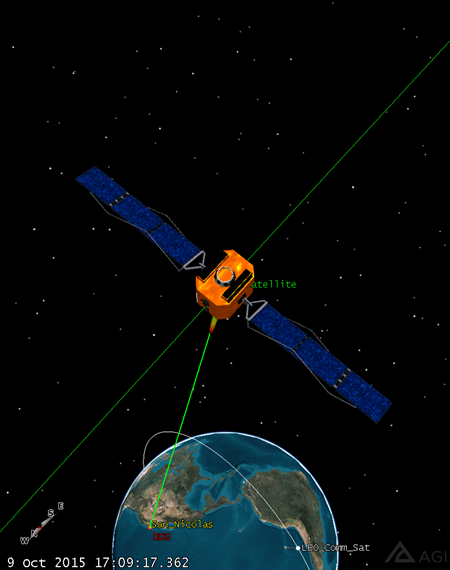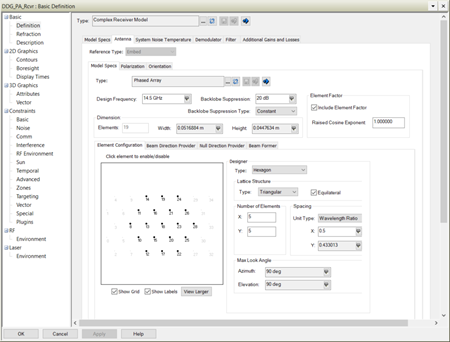Large Constellation Interference Modeling
- May 18, 2022
- Blog Post
-
 Systems Tool Kit (STK)
Systems Tool Kit (STK)
Dr. Jim Woodburn, AGI's Chief Orbital Scientist, introduced STK's new Satellite Collection object in a blog post earlier this year. In that article, Jim helped readers explore the potential of Satellite Collections for a variety of applications. In this article, I'm going to show you a detailed example of how you can use a Satellite Collection object to make an RF interference scenario dramatically more efficient.
Large low Earth orbit (LEO) communications constellations are emerging to provide global connectivity that delivers low latency broadband data services. With many signal sources, you can investigate their impact on your own voice and data services. Modeling these large numbers of possible interference sources can be challenging and time consuming. STK makes this fast and easy with its Satellite Collection object and the linking of objects to a Component in the Component Browser.
The base scenario consists of GEO satellite communicating with a ship in the North Pacific. The interference is modeled against this link.




The first step is to build a seed LEO satellite with a multibeam transmitter consisting of 18 antennas. Each beam is linked to a custom antenna model created from a single component in the Component Browser. The custom antenna is a 75 cm Parabolic antenna.


A single change in the Component Browser will propagate through all the linked beams.


Next, open the Walker tool and select the LEO satellite (and its 18 beams) as the seed object to configure the constellation, then select the Create Satellite Collection container option, and then enter the number of planes and number of satellites per plane to create the collection.

You can change the parameters of the constellation size by entering them in the Walker tool.
The following family of graphs show performance against varying sized interference constellations. The metric used is Carrier to Noise and Interference [C/(N+I)].
The carrier to (noise + interference) ratio [C/(N+I)] is a ratio where C is the carrier power, N = kTB (Boltzmann's constant * system temperature * bandwidth) and I = interference power.
The quantity is essentially the ratio of the average desired signal power to all interference power and ambient noise. The large drops you see in the plots refer to the times when interference has impacted the receipt of the desired signal to an unrecoverable state.
100 satellites (10 satellites in each of 10 planes)

600 satellites (30 satellites in each of 20 planes)
1600 satellites (40 satellites in each of 40 planes)
2500 satellites (50 satellites in each of 50 planes)
10,000 satellites (100 satellites in each of 100 planes)
The above results were achieved with minimal changes in setup and took minutes to run.
100,899 satellites (999 satellites in each of 101 planes)
This one took a couple of hours.
Wrapping up
This example shows how easy it is to save time by using the Satellite Collection object and the Component Browser to build an interference analysis in STK.







